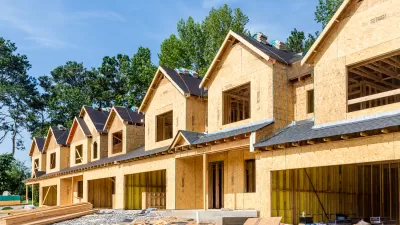During the last two decades, New York City has continued to shed manufacturing jobs. But recent efforts led by the city, in partnership with private developers, are looking to retool some of New York's largest legacy sites for a new breed of tenant.
Brooklyn alone contains about 15 million square feet of light manufacturing space. However, "[b]uilt at the turn of the last century, many of them lack basic amenities like central air-conditioning and automated elevators," writes New York Times' Ronda Kaysen. "As New York City bleeds manufacturing jobs to cheaper markets, persuading companies to stay is, at best, difficult."
Compounding aging infrastructure, the city carries some of the highest rents in the nation, at around $13.16 a square foot, versus a national average of $4.47, and only $5.14 in neighboring New Jersey.
Still, the city and some developers are hoping to retain and lure new, more nimble, manufacturing firms to the city. According to Kaysen, "Three of the area's biggest properties are undergoing makeovers: Industry City, a rambling 6.5-million-square-foot complex off the Gowanus Expressway, which has been reaching out to small food manufacturers to capture some of the energy of the Brooklyn artisanal food scene; Federal Building No. 2, now renamed Liberty View Industrial Plaza, which is in the midst of a $40 million renovation and may soon open a Bed Bath & Beyond; and the city-owned Brooklyn Army Terminal."
FULL STORY: Brooklyn’s Industrial Space Retools for a New Era

Pennsylvania Mall Conversion Bill Passes House
If passed, the bill would promote the adaptive reuse of defunct commercial buildings.

Planning for Accessibility: Proximity is More Important than Mobility
Accessibility-based planning minimizes the distance that people must travel to reach desired services and activities. Measured this way, increased density can provide more total benefits than increased speeds.

Fair Housing Cannot Take a Back Seat to ‘Build, Baby, Build’
If we overlook fair housing principles in the plan to build US housing back better, we risk ending up right back where we started.

LA Metro Board Approves New 710 Freeway Plan
The newest plan for the 710 corridor claims it will not displace any residents.

Austin’s Proposed EV Charging Rules Regulate Station Locations, Size
City planners say the new rules would ensure an efficient distribution of charging infrastructure across the city and prevent an overconcentration in residential areas.

Making California State Parks More Climate-Resilient
A recently released report offers recommendations for keeping state parks healthy and robust, including acquiring additional land for conservation and recreation.
City of Costa Mesa
Licking County
Barrett Planning Group LLC
HUD's Office of Policy Development and Research
Mpact Transit + Community
HUD's Office of Policy Development and Research
Tufts University, Department of Urban and Environmental Policy & Planning
City of Universal City TX
ULI Northwest Arkansas
Urban Design for Planners 1: Software Tools
This six-course series explores essential urban design concepts using open source software and equips planners with the tools they need to participate fully in the urban design process.
Planning for Universal Design
Learn the tools for implementing Universal Design in planning regulations.

























